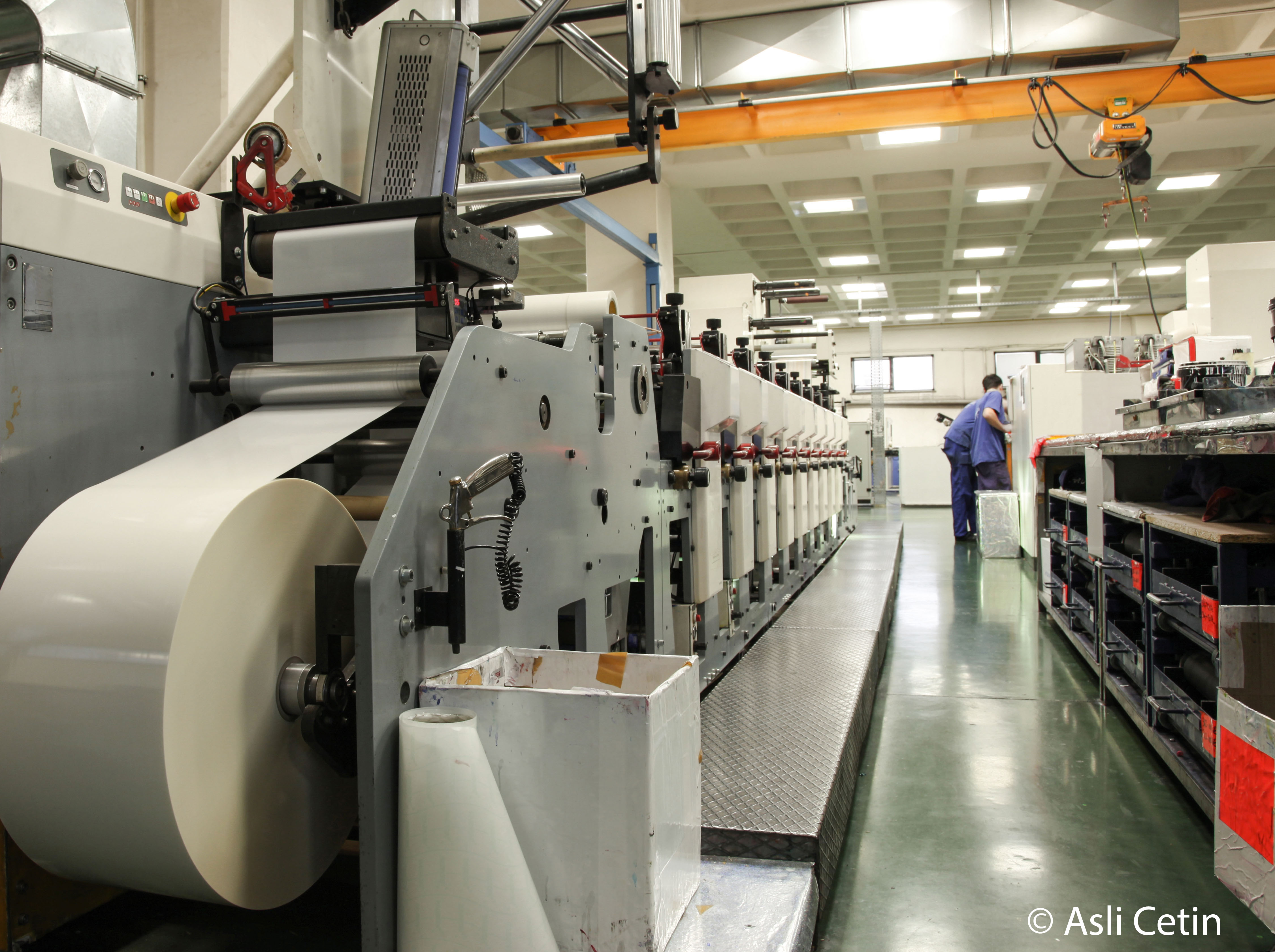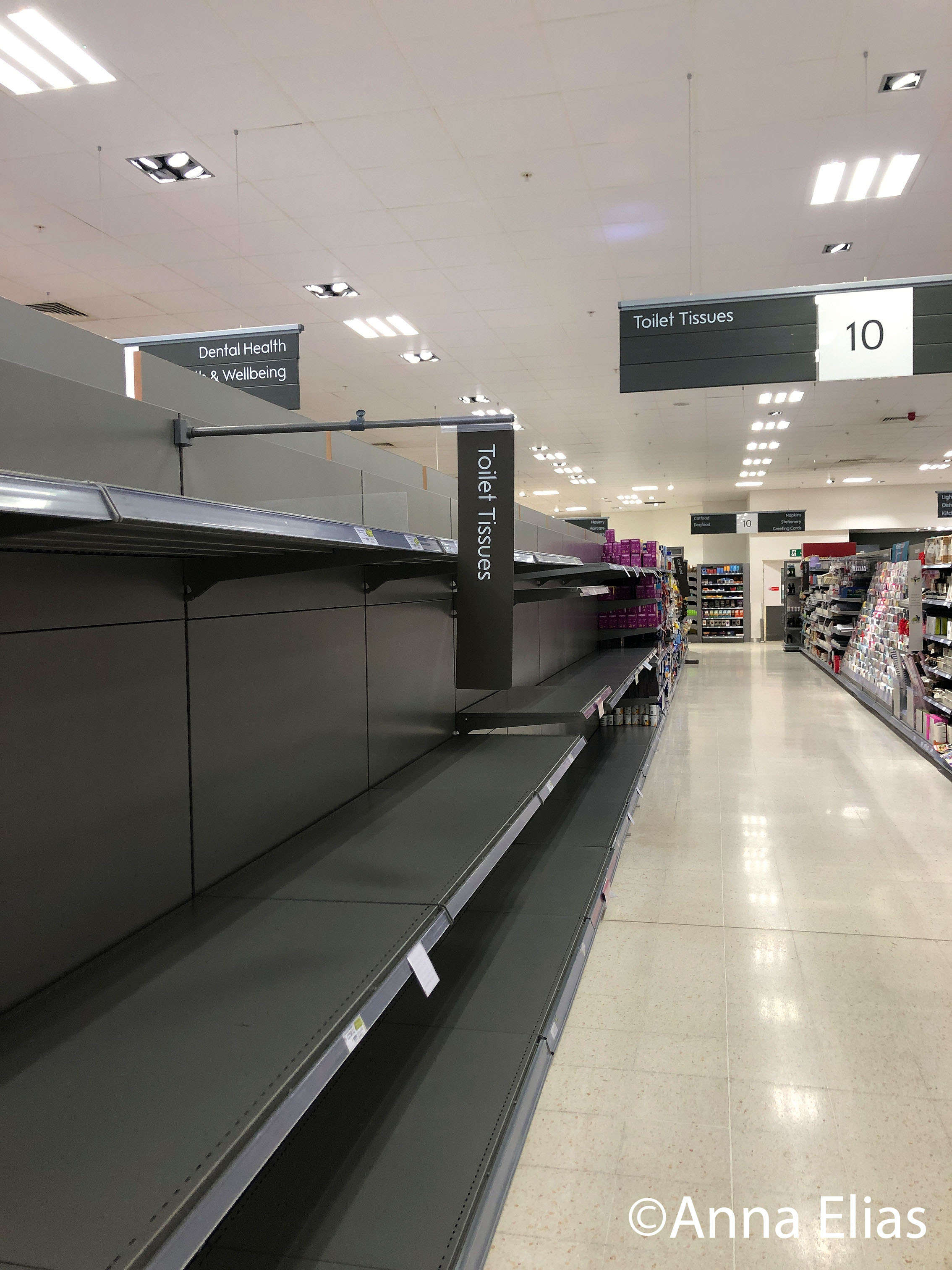When I first got into the paper industry, in the mid-90s, paper was arguablywohlarguably at its peak in production and demand,” Bill Rojack says. “Ever since, there’s been a steadybeständig, kontinuierlichsteady declineRückgangdecline in demand.” Rojack is the vice president of the National division(Geschäfts-)BereichDivision of MIDLAND, one of America’s biggest independent paper and packaging distributorPackmittellieferantpackaging distributors. This steady downward trend had led many paper manufacturerHersteller(in)manufacturers either to close their plantWerkplants or repurpose sth.etw. umrüstenrepurpose their equipment.
“paper millPapierfabrikPaper mills are incrediblyunglaublich, enormincredibly expensive,” Rojack explains. “To start a paper mill costs about $2 billionMilliarde(n)billion (€1.8 billion). It takes about five years to build a mill. It’s the third most energy-intensive business in the U.S.” These high costs mean that manufacturers are under extreme pressure to to ensure sth.etw. sicherstellenensure that adequate profits are made.
“At the start of the pandemic, many paper mills ... stopped manufacturing and sold strictly out of their inventoryLagerbestandinventory.” But this was only a temporary solution. It soon became clear that the pandemic was not going to be over quickly. Tired of excessive screen time, people turned to offline activities, such as reading books. This meant that demand for printing paper increased. According to the Association of American publisherVerlag, Verleger(in)Publishers, the sales of adult books per year increased by 12 percent from 2019 to 2020. Children’s and young-adult books increased by 6.4 percent.
paper chaseSchnitzeljagdPaper chase
This expression comes from an exciting cross-country game. Sometimes called “hare and hounds; hare; houndSchnitzeljagd; Hase; Jagdhundhare and hounds”, one person is the “hare” and is to chase sb./ sth.jmdn./etw. jagenchased by everyone else (the “hounds”). The hare leaves a trailSpurtrail of pieces of paper that the hounds follow as they try to catch the hare before the finish line. Today, it can also refer to excessive bureaucracy in a process or organization.
Paper and packaging in the pandemic
With the pandemic came the increased demand for cardboardKarton, Pappecardboard packaging. While many other industries slowed or stopped completely, in mid-April 2020, the packaging industry was operating at up to 95 percent capacity. Instead of going out for meals and going to the shops, people were having food delivered and ordering everything online. By November 2021, the number of U.S. online groceryLebensmittelgrocery customers had reportedly risen to about 150 million shoppers. These changes in behavior meant that the demand for paper packaging suddenly increased — also caused by consumers’ concerns about using plastic. The paper packaging industry in the U.S. now expects to grow by nearly four percent a year until 2026.
“All of a sudden, we had no manufacturing because it had shut down, and we’d sold all of the inventory,” Rojack says. “But we had consumer demand for the product.”
In the chaos of the pandemic, transport containers were in the wrong place, and paper distribution companies couldn’t find drivers for their trucks. These difficulties made the price of paper increase, and manufacturers became concerned about rising prices.

“The value of the paper in any givenhier: in einem beliebigenin any given container is roughly $30,000,” says Jeff Pfister from Veritiv Corporation, a provider of packaging, hygiene products, print and publishing goods. “So, before the pandemic, the cost to ship one container was roughly $1,000 to $1,500. Now the cost to ship that container, depending on where you’re coming from, is anywhere from $15,000 to $20,000. When it comes to the cost of the paper, there’s not enough marginGewinnspannemargin on those containers from a paper standpoint to absorb that kind of freight cost increase.”
Pfister, who is responsible for category managementProduktgruppenmanagementcategory management, strategy and marketing, explains that thesupply chainLieferkette supply-chain problem also comes from the fact that the U.S. is a net importer of paper. “Paper was to be squeezed offabgequetscht werden; hier: verdrängt werdensqueezed off the containers to make room for other products,” Pfister says. “In the U.S., we don’t make enough paper to meet our demand, so we have to import it. When we weren’t able to import as much paper as we needed, we had shortageKnappheit, Engpassshortages and increased cost.”
Takeaways
The paper industry has seen a lot of disruptionStörung; hier: Umwälzungendisruption in the pandemic. The rapid growth of e-commerce and home deliveries has caused demand for paper packagingVerpackungpackaging to rise.
In response, many paper manufacturers have reduced capacity for printable paper to make packaging material instead. At the same time, international supply chainLieferkettesupply chains are disrupted, and the U.S. is experiencing a labor shortageArbeitskräftemangellabor shortage.
This combination of developments means printers and publishers are struggling to find enough paper. The increasing costs could make profit marginGewinnspanneprofit margins disappear.
The big increase in demand for packaging led many paper suppliers to repurpose their machines to produce packaging paper instead of copy paper. Another problem for the industry is the national labor shortage. “At the end of September 2021, the Bureau of Labor StatisticsBehörde für Arbeits-(markt)statistikBureau of Labor Statistics said there were 10.4 million open jobs in the U.S. and 7.4 million unemployed people,” explains Matt Baehr, the executive directorGeschäftsführer(in)executive director of the Book Manufacturers’ Institute (BMI). “Even if you gave every unemployed person a job, we’d still need another three million people. The national labor participation rate is down. Book manufacturing is also an industry with a much older workforceErwerbsbevölkerungworkforce. Workers have been retiring, and there are more people leaving the industry than coming in.”
Increasing demand means increasing prices
As a result of all these difficulties, many publishers have to change their plans to ensure their books can still be produced. This often involves switching paper gradePapiersorte; -qualitätpaper grades and dropping plans for decorative covers. Delayed book releaseVeröffentlichungreleases have hit publishers hard, as production material could not be found in time for the planned publication date. “A publisher might think they’re going to get the books to manufacture sth.etw. herstellenmanufactured by mid-November and have two weeks to deliver them to the bookshops,” Baehr says. “Then, all of a sudden, the paper is not available, so it gets pushed back two weeks. Then the trucking company cannot get there for another week. It gets pushed back and back, and now the release date is at the start of January. That’s going to hurt the publisher because it won’t get Christmas sales.”
For U.S. newspapers and magazines, the cost of paper was 20 to 30 percent higher in 2021 than in 2020. This increase in price may be enough to force some publications to close. The situation in Asia and Europe is even worse, as paper costs there have been rising faster.
Many people think higher paper costs will to accelerate sth.etw. beschleunigenaccelerate the growth of digital, which has influenced media publications and business communications, as more companies to gohier: werdengo “paperless.” Non-profit organizations such as Two Sides are working to to reveal sth.etw. enthüllenreveal the truth behind the mythMythosmyths about the paper industry. Two Sides wants to strengthen confidence in the graphic communications supply chain by promoting the sustainabilityNachhaltigkeitsustainability of paper and printed products. An international surveyUmfragesurvey to commission sth.etw. in Auftrag gebencommissioned by Two Sides in 2021 found that:
- 49% of participants thought they spent “too long” on digital deviceGerätdevices.
- 55% were concerned about online security.
- 47% understood that “going paperless” still meant that people often printed out hard copies for themselves.
Rojack explains: “It is not about print versus digital or print versus electronic. It is about print and electronic. People will move toward whatever medium they want.”
For Rojack, the supply-chain problems and their knock-on effectFolgewirkungknock-on effects are more concerning than new digital technologies. “I work with a paper manufacturer in the Netherlands. Right now, the manufacturer is paying a carbon taxCO2-Steuercarbon tax and an energy surchargeAuf-, Zuschlagsurcharge,” he says. “Then, they’ve got freight and logistics issueProblemissues. A lot of my print customers cannot meet the scheduleTermin-, Zeitplanschedules for their publishing customers, so the customers go to another printer. Then the printer has a lot of paper just to sit on sb.’s floorhier: bei jmdm. ungenutzt herumliegensitting on their floor, so they cannot receive any new shipments either. I believe there is a lot of paper sitting in warehouseLagerwarehouses around the world. Eventually, this supply-chain crunch (ifml.)Krise; auch Knappheitcrunch will get easier because of all the inventory that is to be strandedfestsitzenstranded where it’s not supposed to be.”
Paper shortages around the world have forced everyone to rethink the way they use paper. From pulpPulpe, Papierbreipulp shortages leading to a lack of toilet paper to increased demand for packaging leading to repurposed factory machinery, the changes have been enormous. “The pandemic has been a time machine, and it’s just thrown us into the future,” Rojack says. “I believe I’ve got another 20 years in this, but the landscape could look very different.”

Neugierig auf mehr?
Dann nutzen Sie die Möglichkeit und stellen Sie sich Ihr optimales Abo ganz nach Ihren Wünschen zusammen.



